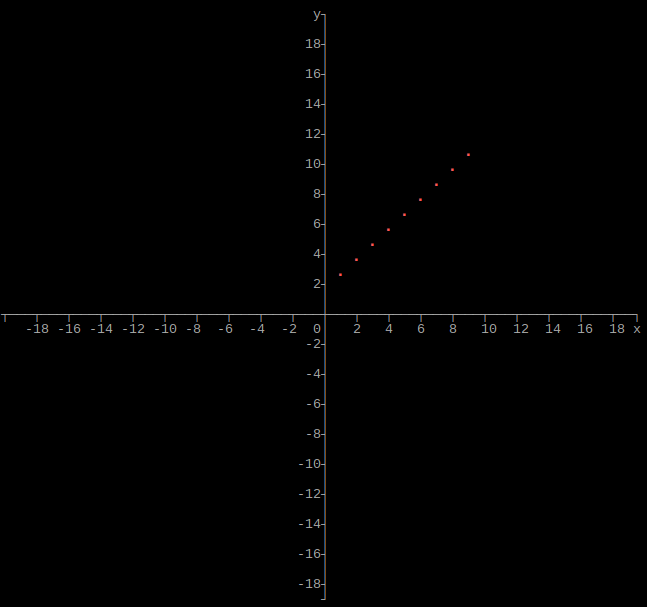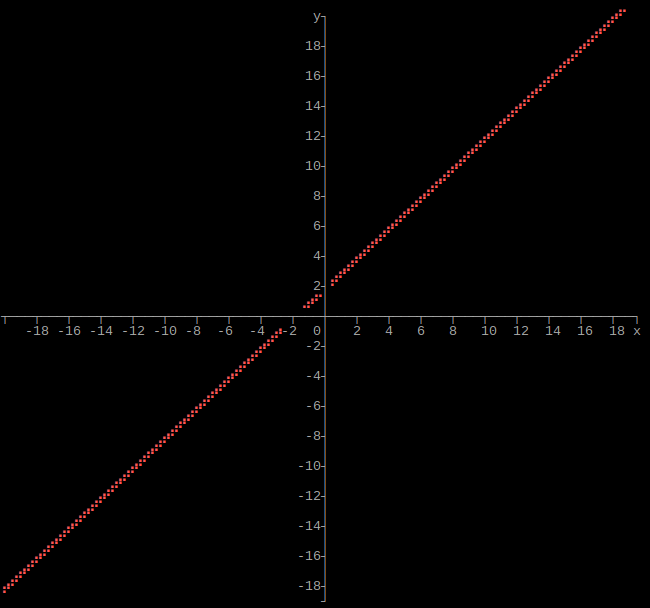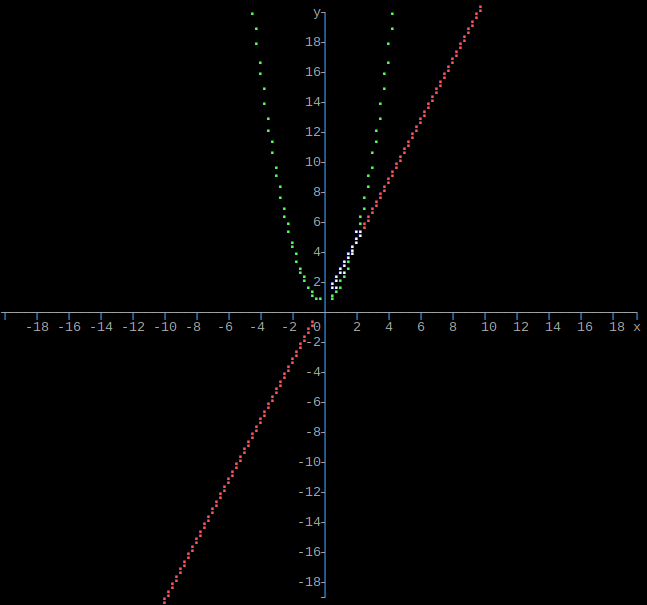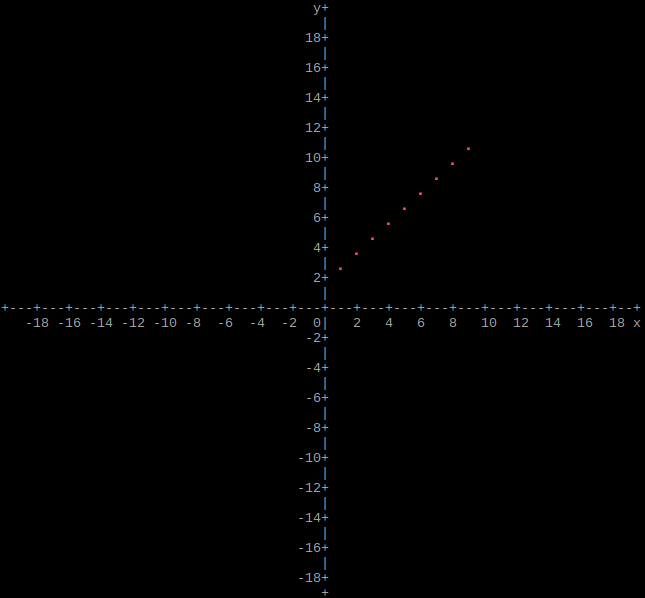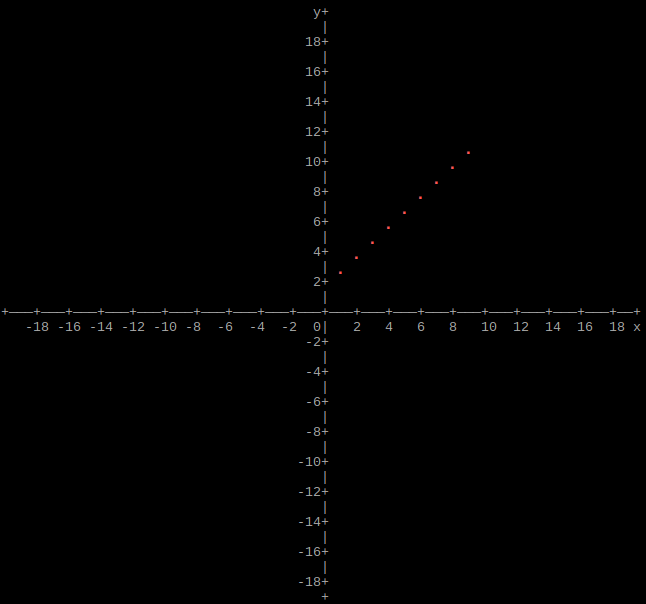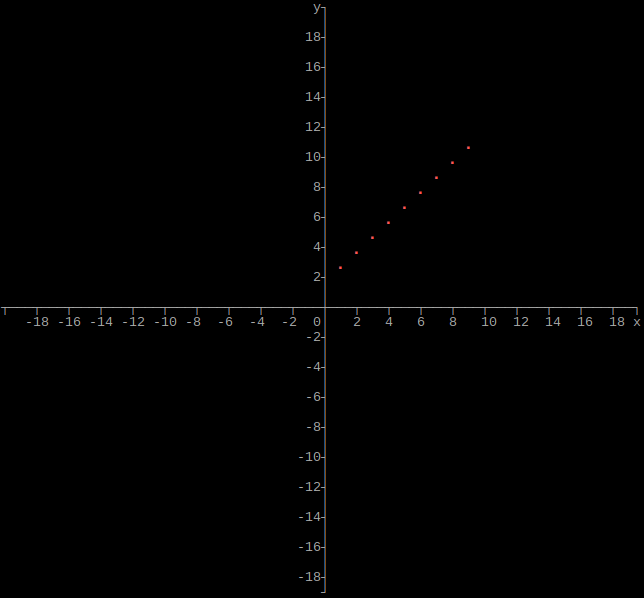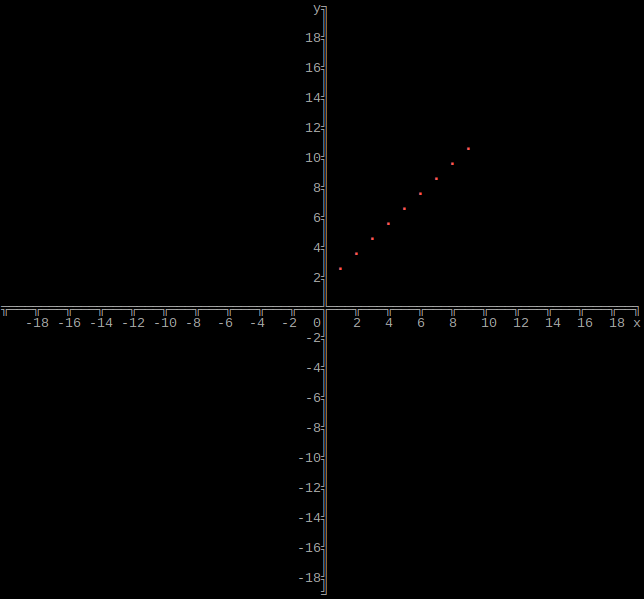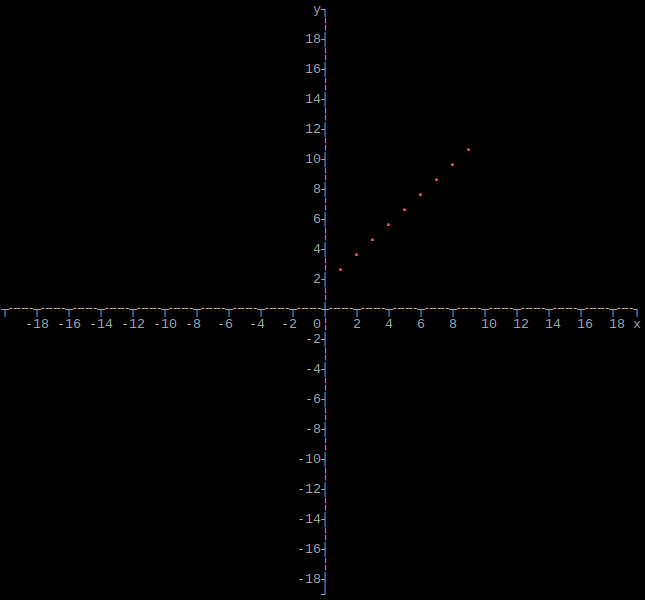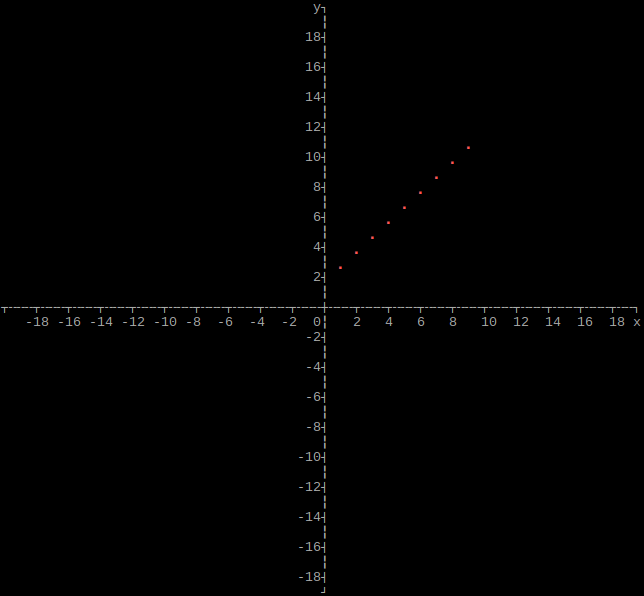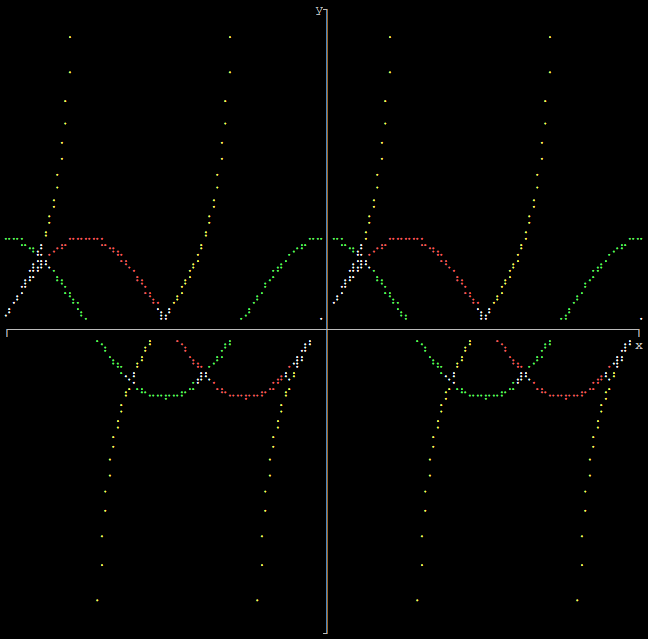Tables and Graphs
C++ Console Table and Graph/Plot Libraries
Copyright © 2018 Teal Dulcet
These header only libraries use box-drawing, Braille, fraction and other Unicode characters and terminal colors and formatting to output tables and graphs/plots to the console.
Please visit tealdulcet.com to support these libraries and my other software development.
Tables
Usage
Complete versions of all of the examples below and more can be found in the tables.cpp file.
Compile with: g++ -Wall -g -O3 tables.cpp -o tables.
Run with: ./tables.
Output char array as table
#include "tables.hpp"
using namespace std;
int main()
{
size_t rows = 5;
size_t columns = 5;
char ***array;
// Allocate and set array
tableoptions aoptions;
aoptions.headerrow = true;
aoptions.headercolumn = true;
table(rows, columns, array, NULL, NULL, aoptions);
// Deallocate array
return 0;
}
Table cells can contain Unicode characters, but not newlines and tabs.
Output array as table with separate header row and column
#include "tables.hpp"
using namespace std;
int main()
{
size_t rows = 4;
size_t columns = 4;
const char* headerrow[] = {"Header row/column 1", "Header row 2", "Header row 3", "Header row 4", "Header row 5"};
const char* headercolumn[] = {"Header column 2", "Header column 3", "Header column 4", "Header column 5"};
char ***array;
// Allocate and set array
tableoptions aoptions;
aoptions.headerrow = true;
aoptions.headercolumn = true;
table(rows, columns, array, headerrow, headercolumn, aoptions);
// Deallocate array
return 0;
}
Output same as example above.
Output array as table
#include "tables.hpp"
using namespace std;
int main()
{
size_t rows = 5;
size_t columns = 5;
double **array; // array can be any data type
// Allocate and set array
table(rows, columns, array, NULL, NULL, tabledefaultoptions);
// Deallocate array
return 0;
}
Output sorted array as table
#include <algorithm>
#include "tables.hpp"
using namespace std;
int dimensions; // Number of columns
int sortdimension; // Column to sort by
template <typename T>
bool compare(const T *a, const T *b)
{
if (a[sortdimension] == b[sortdimension])
for (int i = 0; i < dimensions; ++i)
if (sortdimension != i and a[i] != b[i])
return a[i] < b[i];
return a[sortdimension] < b[sortdimension];
}
int main()
{
size_t rows = 5;
size_t columns = 5;
int **array; // array can be any data type
// Allocate and set array
dimensions = columns;
sortdimension = 0;
sort(array, array + rows, compare<int>);
table(rows, columns, array, NULL, NULL, tabledefaultoptions);
// Deallocate array
return 0;
}
Output single function as table
#include "tables.hpp"
using namespace std;
double afunction(double x)
{
return x + 1;
}
int main()
{
double xmin = -10;
double xmax = 10;
double xscl = 2;
tableoptions aoptions;
aoptions.headerrow = true;
table(xmin, xmax, xscl, afunction, aoptions);
return 0;
}
Output multiple functions as table
#include <cmath>
#include "tables.hpp"
using namespace std;
double function1(double x)
{
return 2 * x;
}
double function2(double x)
{
return pow(x, 2);
}
int main()
{
double xmin = -10;
double xmax = 10;
double xscl = 2;
size_t numfunctions = 2;
// Function parameter and return value can be any data type, as long as they are the same
double (*functions[])(double) = {function1, function2};
tableoptions aoptions;
aoptions.headerrow = true;
table(xmin, xmax, xscl, numfunctions, functions, aoptions);
return 0;
}
Options
Header row
Option: headerrow
Default value: false
Header rows are bolded and centered.
Header column
Option: headercolumn
Default value: false
Header columns are bolded and centered.
Table border
Option: tableborder
Default value: true
Cell border
Option: cellborder
Default value: false
Requires tableborder to be true.
Cell padding
Option: padding
Default value: 1
Alignment
Option: alignment
Values:
left(default)right
bool to alpha
Option: boolalpha
Default value: false
Title
Option: title
Default value: NULL
The title is word wraped based on the current width of the terminal, using this solution. Handles newlines, tabs and Unicode characters.
Border style
Option: style
Values:
Other C++ Console Tables Libraries
- C++ Text Table (must specify every cell individually in there data structure, limited options, no Unicode support, no header row or column support)
- Cpp Console Table (must specify every cell individually in there data structure, no Unicode support, no header row or column support)
- ConsoleTable (requires C++11, must specify entire row at once in there data structure, no header column support)
Graphs/Plots
Usage
Complete versions of all of the examples below and more can be found in the graphs.cpp file.
Compile with: g++ -Wall -g -O3 graphs.cpp -o graphs.
Run with: ./graphs.
If height is 0, it will be set to the current height of the terminal (number of rows times four). If width is 0, it will be set to the current width of the terminal (number of columns times two).
Output array as plot
#include "graphs.hpp"
using namespace std;
int main()
{
size_t height = 160;
size_t width = 160;
long double xmin = -20;
long double xmax = 20;
long double ymin = -20;
long double ymax = 20;
size_t rows = 10;
double **array; // array can be any data type, but must have exactly two columns
// Allocate and set array
graph(height, width, xmin, xmax, ymin, ymax, rows, array, graphdefaultoptions);
// Deallocate array
return 0;
}
If xmin and xmax are both 0, they will be set to the respective minimum and maximum values of x in the array. If ymin and ymax are both 0, they will be set to the respective minimum and maximum values of y in the array.
Output single function as graph
#include "graphs.hpp"
using namespace std;
double afunction(double x)
{
return x + 1;
}
int main()
{
size_t height = 160;
size_t width = 160;
long double xmin = -20;
long double xmax = 20;
long double ymin = -20;
long double ymax = 20;
graph(height, width, xmin, xmax, ymin, ymax, afunction, graphdefaultoptions);
return 0;
}
Output multiple functions as graph
#include "graphs.hpp"
using namespace std;
double function1(double x)
{
return 2 * x;
}
double function2(double x)
{
return pow(x, 2);
}
int main()
{
size_t height = 160;
size_t width = 160;
long double xmin = -20;
long double xmax = 20;
long double ymin = -20;
long double ymax = 20;
size_t numfunctions = 2;
// Function parameter and return value can be any data type, as long as they are the same
double (*functions[])(double) = {function1, function2};
graph(height, width, xmin, xmax, ymin, ymax, numfunctions, functions, graphdefaultoptions);
return 0;
}
Options
Border/Axis
Option: border
Default value: true
Axis labels
Option: axislabel
Default value: true
Requires border to be true.
Axis units labels
Option: axisunitslabel
Default value: true
Requires border and axislabel to be true.
Title
Option: title
Default value: NULL
The title is word wraped based on the current width of the terminal, using this solution. Handles newlines, tabs and Unicode characters.
Axis/Border style
Option: style
Values:
Graph/Plot Color
Option: color
Values:
- System default
- Black
- Red (default)
- Green
- Yellow
- Blue
- Cyan
- Light gray
- Dark gray
- Light red
- Light green
- Light yellow
- Light blue
- Light cyan
- White
See here for examples of the colors.
Only used for plots and when graphing a single function.
When graphing multiple functions, colors 2 - 14 are used inorder. Color 0 is used where the functions cross.
Plot
Graph
Other C++ Console Graphs/Plots Libraries
- C++ terminal plotting library (requires C++14, based on UnicodePlots.jl, no documentation and very difficult to use, although supports animations)
Contributing
Pull requests welcome! Ideas for contributions:
- Add more options
- Add an option to print a border around graphs/plots
- Add more examples
- Improve the performance
- Handle newlines, tabs and formatted text in the tables
- Handle formatted text in the table and graph/plot titles
- Support more graph/plot colors
- Support combining colors when functions cross
- Support plotting multiple arrays of different sizes
- Port to other languages (C, Java, Rust, etc.)












